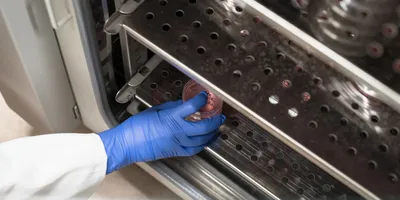
CURRENT ISSUE | VOLUME 6 - ISSUE 8 | October 2011
COVER STORY
Top 10 Management Skills You Need
What lab managers must know to get ahead in their careers
White Papers and Application Notes
Lab Health and Safety Tips
Lab Design and Furnishings
Editor's Buzz
Surveys
Laboratory Technology

The function of molecular diagnostics is to analyze the composition of a patient’s genetic makeup in order to reveal any potential predispositions of that individual to specific diseases. Identifying these biomarkers can allow treatment options to be outlined that are likely to be effective in particular patients and not in others.
Research-Specific Labs
How it Works

With the rapid pace and high demands of research that dominate today’s research laboratories, scientists require faster, more dependable, and safer means of accomplishing detail-oriented and potentially tedious liquid handling tasks, while producing reliable results that do not waste expensive reagents.
Lab Product
Product Focus
Ask the Expert

Byron Brehm-Stecher, Ph.D., Associate Professor in the Department of Food Science and Human Nutrition at Iowa State University, heads the Rapid Microbial Detection & Control Laboratory that works to ensure the safety of the food supply through improved detection and inactivation of food-borne pathogens. While the laboratory uses a combination of several different analytical tools for rapid detection, a key emphasis lies on pre-analytical sample preparation (sample prep), which is the separation and concentration of target cells from complex samples and removal of interfering matrix components prior to detection. He talks about the common challenges associated with sample prep and what an ideal sample prep process should involve.
Leadership and Staffing

We all know that scientists who pursue advanced degrees like a Ph.D. are smart. They are driven. And they are no doubt passionate about their work. But can they cut it in the real world? Recent national media reports that debate the value of advanced degrees are shining a light on the need to have marketable skills that will work beyond the “ivory tower.”

Lab managers are responsible for recruitment and development of chemists and other lab professionals. They often have to explain to the rest of the world the value added by the chemists and also educate the new recruits on what the various jobs entail. For lab employees, better understanding of jobs and available career paths can contribute to higher levels of job satisfaction.















